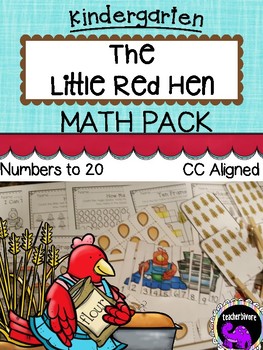The Little Red Hen Math Activity Pack for Kindergarten
- PDF
Description
Use the worksheets and centers in this pack to compliment your ELA Little Red Hen Unit/lessons! Intended for Kindergarten and Pre-K students, this pack is perfect for cross-curricular lesson planning and provides a fun way to teach and reinforce important counting and cardinality skills.
Included in this pack:
**13 print-and-go worksheets:
I Can Trace Numbers to 10
I Can Write Numbers to 10
I Can Trace Numbers to 20
I Can Write Numbers to 20
How Many? Numbers 1-10 (2 worksheets)
How Many? Numbers 10-20 (2 worksheets)
Count and Graph
Ten Frames Numbers 1-10 (2 worksheets)
Wheat Addition Within 5
Seed Addition Within 5
**4 Reusable Math Center Activities:
Number Sequence Puzzles #1-10 (4 different designs)
Count and Clip Cards #1-20
Wheat Seed Counting to 20
Roll and Cover Dice Game (2 designs)
HAPPY TEACHING!
To view/purchase The Little Red Hen Literacy Activity Pack click below!
The Little Red Hen Literacy Activity Pack for Kindergarten and First Grade





